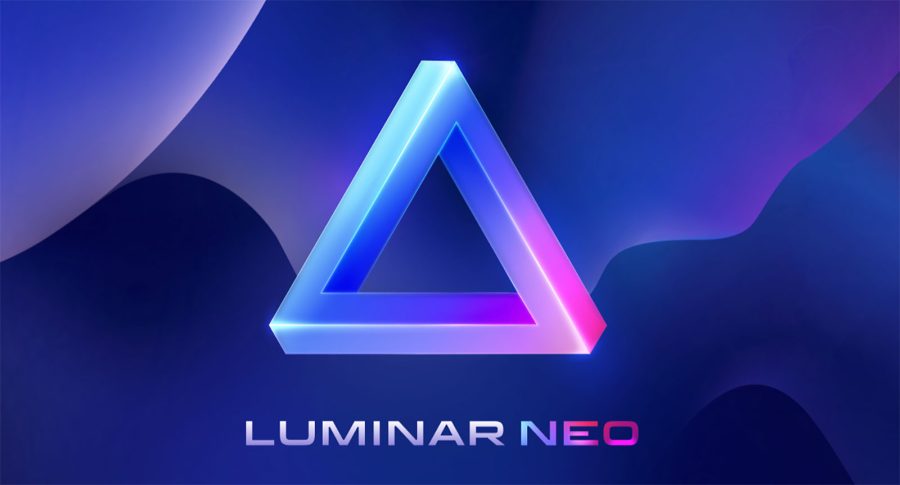Luminar Neo Review: AI-powered Masking and Edits

In this Luminar Neo review, we’ll take a look at the latest iteration from Skylum in its popular AI photo-editing software series.
Developed for hobbyists and professionals that want to spend less time in front of a computer, and more time taking pictures, Luminar Neo aims to remove the tedious work of editing photos.
Download Luminar Neo: The intelligent AI photo-editing software
What is Luminar Neo?
Harnessing AI technology, Luminar is an intelligent photo-editor. With a number of AI-based tools packed into the software, it’s definitely on the more “futuristic” side of things and boasts a lot of tech that you won’t find in dinosaurs like Adobe Photoshop and Lightroom.
One of the big attractions of Skylum’s Luminar series is that it is not a subscription-based software package. This means that you pay a one-off, very affordable fee of £59 and you keep the software forever.
However, the flip side of this is that Skylum are incentivised to create major updates as standalone pieces of software, rather than updating what you already own.
If you already own Luminar software, you can upgrade to Luminar Neo for a discounted price, which effectively ends up being like having a cheap subscription. But the main thing is that you don’t need to upgrade, and the control is in your hands versus with Adobe where you lose access as soon as you stop paying.
What excites me the most about Luminar Neo
The previous version, Luminar AI, things were good but with room for improvement. It was the first attempt by Skylum to bring AI-editing to the forefront of their suite, but this time around they’ve been able to refine things.
In my previous Luminar review, I’ve spoken about the extremely impressive sky replacement tool. This tool uses AI the swap out the sky effortlessly, including in all the tiny gaps amongst tree branches.
But what I couldn’t understand is why this technology wasn’t being used to allow us to instantly create masks.
Well, that tool is finally here! A quick, effective masking tool backed by this AI-technology is everything I’ve always wanted Luminar to provide. I’m thrilled to see it is now included in Luminar Neo.
Mask AI – is it any good?
I must admit that I thought the masking tool would only work on the sky. But in fact the tech is so clever that it can pull out most features within an image and allow you to select them at the touch of a button.
For example, a photo of a mountain road will offer up choices like “Sky, Mountains, Man-made ground, Natural ground.” Selecting mountains and natural ground will isolate (you guessed it) the mountains and dirt landscape, whilst leaving the sky and the road untouched.
You can see that things aren’t perfect, though. The road has the mask bleeding onto it. and will require some fine-tuning. No bother – this is done easily by choosing the masking brush and erasing the parts which we don’t want.
Top tip: If you click the mask in one spot, and then hold shift and click elsewhere, your mask will draw a perfectly straight line between these two points. This is ideal for fixing the road in this image.
When trying other scenes, I had mixed results. Some images of a starry sky saw a very patchy selection that made me think I was better off doing things manually.
Of course, I could fix up the sky very quickly but then why am I using the tool? Granted, it’s helpful for the edges, but it was a bit disappointing to see the tool scuppered by stars (something that is commonly found in the sky, after all).
Ready to try it? Download Luminar Neo on the Skylum website.
Some bugs to squish
There are a couple of big issues for me so far, however. These problems are making the masking process more fiddly, and for more complex edits they are just plain annoying.
Firstly, the undo function does not work with masking. If you make a mistake, there’s no way to undo the change you made to your mask. You’ll need to fix it or try again. This is absolutely crazy to me, and is a huge oversight by the development team in my opinion. Who doesn’t make an error when painting a mask?!
Secondly, you are not able to save a mask. When you close the tool, the mask is gone. That means that you have to go through the whole process of selecting and refining things all over again. Not only that, but the copy/paste function to move your mask between tools seems to be broken.
Now, what I would say is that the above issues all sound like bugs with the software. I’ve reported these to Skylum, and I’m hoping we’ll see some fixes. If not, then for me that renders Mask AI practically useless in a professional editing scenario.
It doesn’t work for animals
Now here’s a problem that goes beyond smaller bugs. As a nature photographer, I immediately tried to use the mask tool with animals. Birds, elephants, cats… none of these can be selected by Mask AI.
I am not quite sure why Skylum has not trained the system to select animals from a scene. Perhaps they are just too varied and unpredictable as a subject for the system to actively understand.
But this means that if you want to select and isolate an animal subject with a mask, then that is not possible.
In fact, in the first example I tested this on, Luminar Neo thought that a bear was a mountain. Hmm – not quite the result we’re looking for.
But it’s important to note that when it works as expected, it’s a great tool to have at your disposal. For now, though, it seems that animal photographers will not be able to make the best use of this for adjustments that go beyond the sky and environment around the subject.
Sky replacement
As seen in Luminar AI, sky replacement is back through the SkyAI tool. This is really neat, and allows swift and effective changes to the sky. You can use default skies provided by the software (as well as premium packs from Skylum), or your own sky images.

This tool remains, in my opinion, the strongest asset Luminar has to offer in its AI-based options. It works very well, and offers lots of fine-tuning and adjustments to perfect things.
If you’re looking for sky replacement, then Luminar Neo review says it is the right choice.

And another, more tricky, example:
Intelligent erasing
Something new to Luminar Neo that flies a little under the radar is the intelligent removal of dust spots and power-lines from images. This will be an extremely useful tool for many photographers, and speeds up your editing process.
Take a look at this comparison, where the tool removes almost all power-lines from the image. You can then refine things.

You’ll notice above that you can also automatically remove dust spots too, which is pretty neat.
What do the AI tools in Luminar Neo do?
Aside from MaskAI and erasing, there are a number of other AI tools in Luminar Neo that you can utilise. These are alongside all of the traditional tools you’d expect from a photo-editor.
Here are some of the highlights:
CropAI will adjust the composition and crop for you. Things can be manually fine-tuned where needed.
Portrait BokehAI allows you to easily create a “creamy bokeh blur” behind your (human) subject. Sadly, like with MaskAI, this does not work with animals.
Portrait Background RemovalAI promises to allow you to remove a background behind a person and swap it out automatically. This tool is coming in a future update, delayed by the situation in Ukraine (Skylum is based in Ukraine, although still operational).
RelightAI creates a 3D map of your photo, allowing you to relight the background naturally. This is useful for backlit subjects or images where there’s an area of darkness through the frame.
SkyAI is as seen in Luminar AI version. You can intelligently select the sky and replace it with a number of default skies, or your own custom sky image.
You’ll also benefit FaceAI, SkinAI, BodyAI, AtmosphereAI, EnhanceAI, and StructureAI.
User interface
As always, Luminar software looks slick. It is a modern take on photo-editing, and it just feels polished. It’s the attention to detail for the design which makes using Luminar Neo a pleasing experience.
The colour palette of the icons for the tools is a lovely gradient of blues into reds and yellows. There are linear animations when using the Mask AI tool that just add that extra touch to the software. Of course, these design flares are not at all functional – but they’re nice to look at.
Again, Luminar Neo sees a minimalist feel compared to an editor like Adobe Lightroom or Photoshop.
Something very simple, but very handy, is that when you use a tool on an image it gets placed into a separate ‘Edits’ column. This means that you can quickly get back to the tools you’ve adjusted for your photo, rather than have to scroll through all of the possible adjustments to find them.
Is Luminar Neo fast?
This is the big question that I imagine a lot of you will have: is Luminar Neo fast, and will it run efficiently when editing photos? I’m a Mac user, and I can confidently say Luminar Neo is beautifully smooth and fast for me.
Luminar AI was a quick editor too, but some of the tools did take time to apply. However, adjustments in Luminar Neo are instantaneous and there is no lag.
Of course, every computer is different and it may be that others don’t experience such a smooth process. But there are many factors at play that could cause this, and don’t forget that computers which don’t have sufficient power for photo-editing will naturally see slow-down in any program.
So, the answer to this is yes, Luminar Neo is fast.
Things that are missing
Alright. So what do I miss?
First off, there is no digital asset management in Luminar Neo. You can’t adjust keywords, titles, caption fields… all of that capability is absent and if that’s something you use, then Luminar Neo won’t be your standalone editor.
The good news is that Luminar Neo can act as a plugin. So if you need that, you can plug the software into Adobe Lightroom or Photoshop and utilise its tools from within your primary editing program.
There’s also no layers adjustments. Well, they have something called layers but that is solely to add things like “artistic” flare and other creative photo-composites. Traditional layer editing though? No dice.
There seems to be a complete lack of undo/redo capability in Luminar Neo. This is extremely odd, and an oversight of development. You can revert tools back to the default, but you can’t undo or redo any changes you make like you would expect.
Should you buy Luminar Neo?
Would I buy Luminar Neo? At the very affordable price point, yes I probably would.
Things are definitely not perfect yet, but the cost of Luminar Neo is far from prohibitive for most people and its ability to work as a plug-in to a larger editing program like Adobe Lightroom or Photoshop means it’s a useful string to my bow.
For a professional, this is not a viable choice for a standalone editor. For hobbyists and amateurs, you can definitely benefit from Luminar Neo. It does speed things up, and the problems we have found are specifically with some of the very complex AI-based tools. All the functionality of standard, manual editing is still there and working perfectly, but some of the intelligence-based tools can be a bit hit or miss.
If you want to get hold of a copy of Luminar Neo, you can currently download it for £59 on the Skylum website.

















